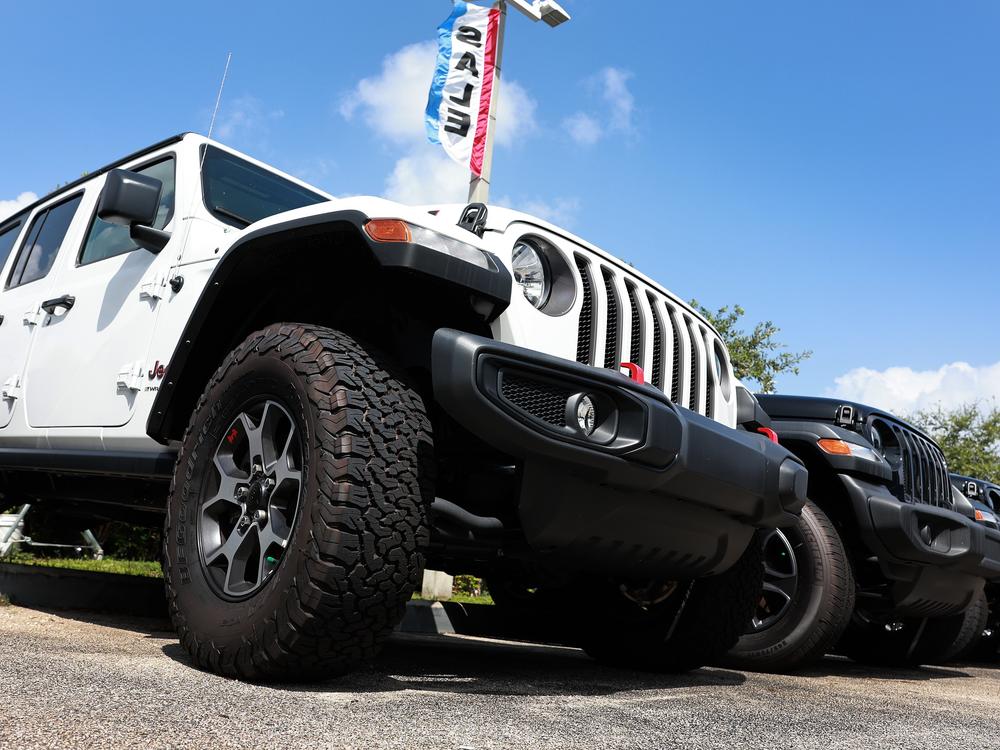Section Branding
Header Content
Stellantis, maker of Jeep and Ram, lays off more than 1,000 Detroit workers
Primary Content
Stellantis, the parent company of Chrysler, Jeep, Dodge and Ram brands, is laying off 1,100 employees in Warren, Michigan.
And that's not the end: as the company grapples with declining sales, Stellantis "will be implementing indefinite layoffs of represented employees across its footprint," a spokeswoman said in an email. She said the company would not comment on how many more workers would lose their jobs.
The Warren Truck Assembly Plant manufactures the Ram 1500 Classic, which is being discontinued after this model year, as well as the Jeep Wagoneer and Grand Wagoneer. Stellantis said the layoffs in Warren, first announced in August, will begin on Saturday. It added that they are the result of the end of production of the Ram Classic.
The layoffs are expected to have ripple effects across the company's U.S. workforce, which includes about 52,000 people according to Stellantis. Some production workers at the Warren plant, particularly those with seniority, may be reassigned to other plants, potentially displacing recent hires at those facilities.
The Warren Truck Assembly Plant has been operating since 1938, and has produced more than 16 million vehicles.
Fancy cars and falling profits
S&P Global Ratings writes that a combination of “headwinds and operational missteps” — business-speak for bad luck and bad decisions — are holding Stellantis back.
Jessica Caldwell, the head of insights at the auto data company Edmunds, says that one of Stellantis’ missteps is that the company moved toward making pricier, fancier vehicles — the Jeep Grand Wagoneer starts at more than $91,000 — just as consumers started getting frustrated with higher prices more broadly. In addition to being bad timing, she argues, it was never a great fit for a brand like Jeep.
“Jeep is sort of that rugged, do-anything, go-anywhere, very basic American brand,” Caldwell says.
But the vehicles Stellantis is putting out now?
“They're expensive. They're flashy,” she says. “And it seems like it's kind of missing the mark in terms of where people are right now.”
Earlier this year, a great-grandson of Walter P. Chrysler said he wanted to buy back the Chrysler and Dodge brands and revive them. Stellantis “politely declined,” the Detroit Free Press writes.
But Stellantis knows something is deeply wrong. When a company is making cars people don’t want — or can’t afford — to buy, the consequence is predictable: A glut of unsold cars. Angry dealers. Dropping profits. Stellantis is grappling with all three.
To be clear, Stellantis turned a profit in the first half of 2024, but that profit was down 48% from the same time period in 2023. CEO Carlos Tavares promised “corrective actions,” especially for North America.
In a call with reporters this summer, Tavares was asked about the likelihood of Detroit layoffs. “You have to make sure that you protect the sustainability of your company by generating margins,” he said in his response.
That is, Tavares intends to protect Stellantis’ profits. And since the company can’t raise prices — in fact, it needs to lower them, if it expects to sell the vehicles it’s already made — that leaves one option. Reducing costs.
Stellantis and the UAW are fighting
Stellantis has been in a bitter dispute with the United Auto Workers about other labor issues. The company agreed in recent talks with the union to reopen a shuttered plant in Belvidere, Ill. It has since delayed plans to revive the factory to produce a mid-sized truck along with EV batteries. While Stellantis says it stands by its commitment “to identify a solution for Belvidere,” the UAW says the delay puts the reopening outside the scope of the current contract, making it once again subject to negotiation.
The union blames the company’s decisions on “gross mismanagement,” while Stellantis claims it is industry-wide volatility and slowing EV adoption that’s causing plans to shift.
This isn’t idle finger-pointing; there’s a lot at stake. In its new contract, the union won the right to strike mid-contract over some changes in manufacturing plans — unless the decision was due to market forces outside the company’s control. The union has threatened to strike in this case, with a campaign to members it’s calling “Stellantis Keep the Promise.” Stellantis says it’s abiding by the new contract, and has filed lawsuits to block any such strikes.
In a new twist, Stellantis publicly announced it was rejecting a union proposal to support workers affected by the delay. The company said what the union wanted was similar to the “Jobs Bank” the UAW used to have, where automakers continued paying workers their salaries when factories were idle. In the 2000s the practice had “a staggering cost,” Stellantis wrote, and “the company will not consider reestablishing contract provisions that directly contributed to the bankruptcies of two of the ‘Big 3.’“
The UAW fired back.
“In just the last 9 weeks, Stellantis has pissed away $1 billion in stock buybacks for a total of $3 billion in stock buybacks this year,” union president Shawn Fain wrote. “Our proposal would cost a fraction of that and would go directly to the autoworkers who have built this company.”
NPR's Andrea Hsu contributed to this report.

